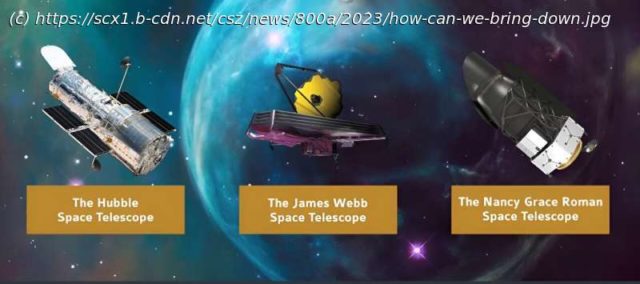We’re all basking in the success of the James Webb Space Telescope. It’s fulfilling its promise as our most powerful telescope, making all kinds of discoveries that we’ve been anticipating and hoping for. But the JWST’s story is one of broken budgets, repeated requests for more time and money, and near-cancellations.
We’re all basking in the success of the James Webb Space Telescope. It’s fulfilling its promise as our most powerful telescope, making all kinds of discoveries that we’ve been anticipating and hoping for. But the JWST’s story is one of broken budgets, repeated requests for more time and money, and near-cancellations.
Can we make space telescopes less expensive?
The JWST is barely a year into its mission and we’re already anticipating the next space telescopes. NASA is already planning and developing the Nancy Grace Roman Space Telescope (formerly WFIRST) and the Habitable Worlds Observatory (formerly LUVOIR) for launch in 2027 and the late 2030s, respectively.
These space telescopes will likely be extremely expensive. However, a team of researchers thinks there are ways to bring the cost of space telescopes down. They’ve written a paper presenting their thoughts titled «Approaches to lowering the cost of large space telescopes.» The lead author is Ewan Douglas, an Assistant Professor of Astronomy at the University of Arizona, Steward Observatory. They presented their paper at the SPIE Optics + Photonics 2023 conference in August. It is available on the arXiv preprint server.
There’s no doubting the scientific rationale for large space telescopes. They deliver results impossible to get in any other way. There’s also no doubting their expense and their drain on NASA’s budget. They can never be cheaper than ground-based telescopes, but ground-based telescopes simply can’t perform the way space telescopes can.
Nobody wants to give up the scientific progress stemming from powerful space telescopes. But it’s hard to counter the criticisms that they’re getting too expensive. Douglas and his co-authors have some ideas on how we can continue to generate new discoveries with space telescopes while making the cost more palatable.
Their paper focuses on a hypothetical 6.5 m mirror optical light that operates in space at room temperature. 6.5 meters is the same size as the JWST’s mirror. They show how some technologies are becoming cheaper, how some technology that was cutting edge is now nearly off-the-shelf, and how spacecraft like SpaceX’s Starship means we can launch telescopes with larger primary mirrors without building complex, expensive mirrors like the James Webb’s.
Ground-based telescopes saw a pronounced drop in costs after 1980, and the researchers say the same thing can happen with space telescopes. «Thus, research and new economies of scale enabled by prior research into optics, commercial electronics, and the SpaceX StarShip could have a similar impact on space astronomy and drive the cost of multiple large observatories down into the regime between the NewSpace projections and ground-based observatories,» they write.






